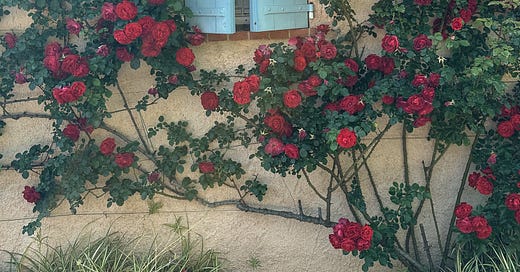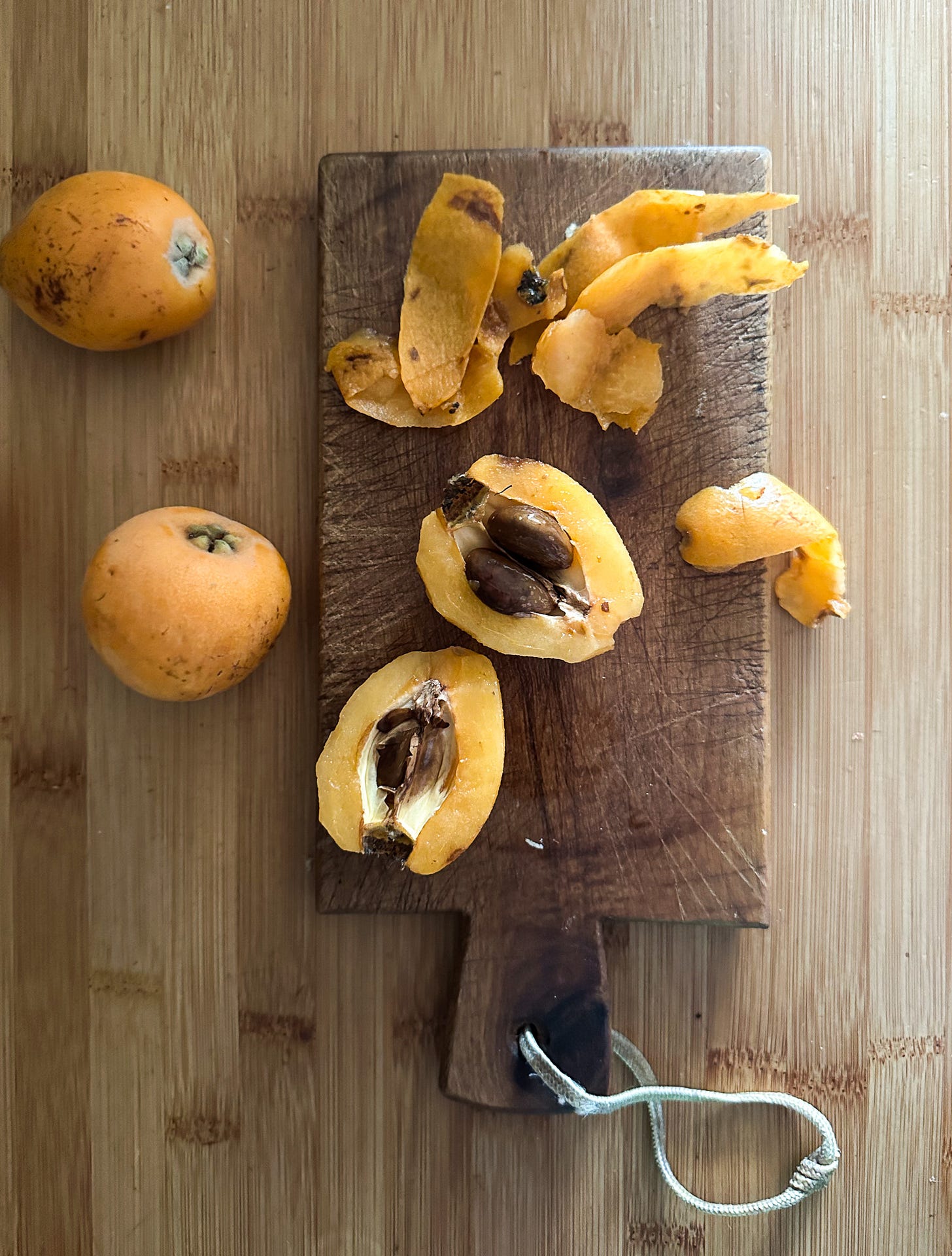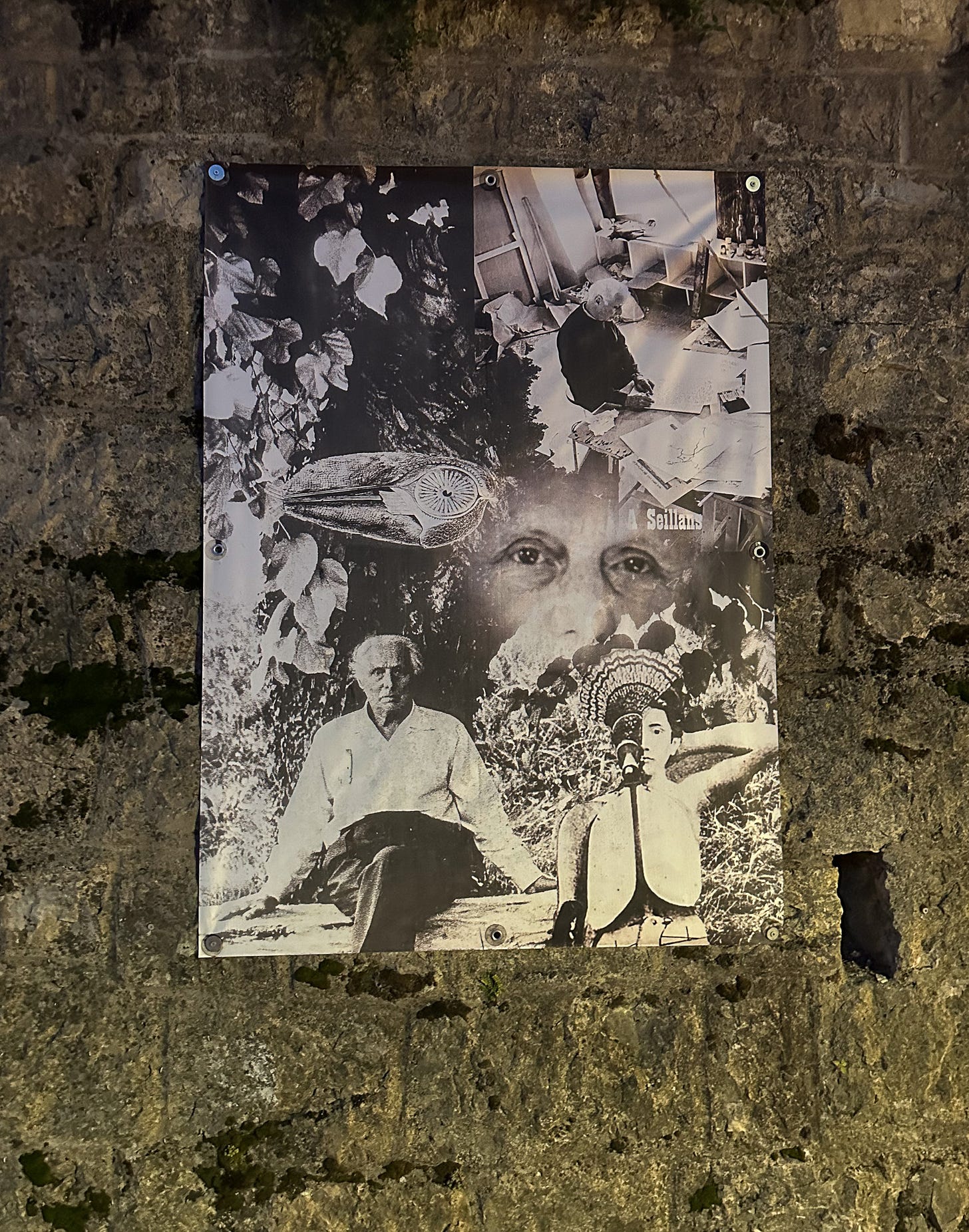Today Cécile1 and I visited the village of Fayence, where we sat down beyond a wall of roses for a Taiwanese tea ceremony with Tea Master Margaret Ledoux. Over the course of an hour we sampled three teas, three times each, each varying in strength, aroma and flavour with every addition of boiling water. Margaret poured our tea into a tiny thimble of a cup, then poured the thimble of tea into another tiny bowl to sip from. This way we could inhale the essence of the tea from the empty thimble before moving on to sipping the tea itself. The tiny porcelain thimble was warm in my hands, against my cheek, under my nose. I inhaled maple syrup, then caramelized sugar, and later, something brighter, almost citrus. This is what happens, Margaret explained, as the leaves unfurl with every soaking of boiling water. The aroma and flavour of the leaves shifts, deepens and evolves into something new. Sipping the teas revealed other notes - dark, rich and even smoky at times. I asked Margaret what determines the flavour and aroma of teas? “You must ask the tea,” she said.
I’ve been eating nèfle in the morning, peeling the mottled yellow skin with a knife and slipping the smooth, squishy fruit into my mouth. This fruit - medlar in English- is new to me. It’s a member of the rose family, an ancient variety, and looks like a battered apricot. Its small, glossy brown pits resemble small chestnuts, or chocolate covered almonds. They fall, sticky, onto my plate with a clank.
It’s been raining off and on this week, and before I arrived, hail fell in Cecile’s garden, gouging holes in the tender leaves of her zucchini plants. Hail - grêle - is my word for the week. In order to remember it, I have to fold it into a sentence and make it my own.
Quand je suis arrivé la grêle était déjà tombée, faisant des trous dans les plants de courgettes de Cécile.
Another tool for remembering is when a name pops up, three times in twenty-four hours: Max Ernst.
There is a Max Ernst exhibit on in Aix right now. I bought a ticket and treated myself to the audio guide, which meant I meandered through the rooms of L’Hôtel de Caumont listening with a little box at my ear, learning about this twentieth century German artist, the surrealist movement he was part of, his imprisonments during WWII, the escapes, the marriages, the mixed mediums and the transatlantic trips he took as an artist in exile. That night, after fried courgette flowers and steamed asparagus with butter and sea salt, I curled up to watch Netflix’s Transatlantic, a seven part series set in Marseille in 1940 where refugees are struggling to find safe passage out of France. Max Ernst, played by German actor Alexander Fehling, is one of those refugees. And then, the next evening, Cécile and I strolled through Seillans, a beautiful hill top village in Provence, where Max Ernst happened to spend the last twelve years of his life with wife and artist Dorothéa Tanning. A poster with his image, lit by a street lamp and a crescent moon, was pinned to a stone wall next to the home where he once lived. I took a photo, to make it my own.
Today I waited in line at greengrocers, arms full of more nèfles, a round of soft cheese and a punnet of raspberries. Beside the cash were bundles of the thinnest, soft-topped asparagus, almost as fine as stalks of wheat. Asperges de bois, the sign read - wild asparagus. I added a bunch to my armful, and when it was my turn, I asked the woman at the cash how to prepare this delicate version of the vegetable. She mumbled something I couldn’t understand. Behind me was a chic silver-haired woman who must have sensed my confusion. She moved in close, touched my forearm and whispered, en français, trim them and fry gently with a noix de beurre, no water! C’est tout. Bon appétit!
Cécile was my French roommate in 1995-96. She was studying law, I was sipping chocolat chaud on the Cours Mirabeau / taking French classes on a Dalhousie exchange. We cooked together in our tiny kitchen, lightening the pilot stove with a match taped to a wooden spoon and whisking vinaigrette’s in chipped pottery bowls. Cécile had to focus, I was practically en vacances, but somehow she tolerated me and here we are, sipping tea, all these years later.








You are so lyrical - I smell, I taste and I even try to speak the French words as they should be, and I remember my dear friend and researcher, the late Monsieur Brian (he was a passionate gourmande) who was my link with 12th century Lyon. Thank you...
I live in Southern California and the yellow fruit you discovered in France is called loquats here.